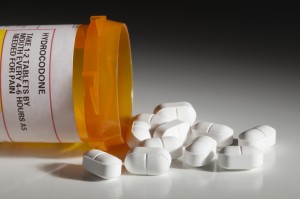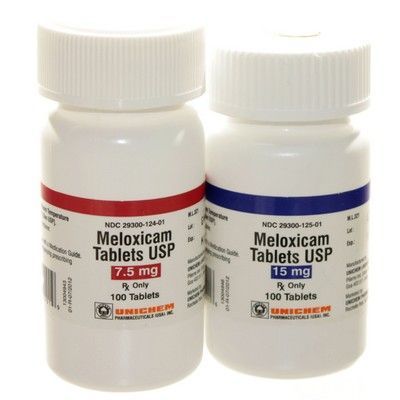Contents
What is Hydrocodone
Hydrocodone is a Generic name for an opioid drug which is synthesized from codeine, an opioid alkaloid that can be found in the opium poppy.
This drug is narcotic analgesic which is used orally for relieving the moderate to severe pain, but it is also commonly used in liquid form as an antitussive agent for symptomatic relief of nonproductive cough, alone or together with other cough suppressants or expectorants.
This drug works by changing the way the brain and nervous system respond to pain. As an analgesic, hydrocodone is usually combined with ibuprofen, acetaminophen or aspirin for pain treatment.
The analgesic action of hydrocodone starts in 20–30 minutes and lasts for about 4–8 hours. However, hydrocodone is only used for the treatment of patients who are expected to need painkiller for severe pain for a long time, and who cannot be treated with other medicines or treatments.
Hydrocodone is predominantly prescribed in the US. According to the the International Narcotics Control Board, 99% of the worldwide hydrocone supply in 2007 was consumed in the US.
Other Brand names on the market containing hydrocodone are: Hysingla ER, Zohydro ER, Norco, Vicodin and Robidone.
What is Meloxicam
Meloxicam is a Generic name for a nonsteroidal anti-inflammatory drug (NSAID) that is used to relieve the symptoms of pain and inflammation for conditions such as: osteoarthritis, rheumatoid arthritis, juvenile rheumatoid arthritis, primary dysmenorrhea and fever.
This drug works by reducing hormones that that are responsible for causing inflammation and pain in the body. It is available in tablet form in following strengths: 7.5 mg and 15 mg. Meloxicam begins to relieve pain about 30–60 minutes after oral administration.
Other common Brand names for this drug on the market are: Movalis, Recoxa, Melox, Mobic and Tenaron.
How does Hydrocodone and Meloxicam work in the body
Hydrocodone is an opioid agonist of opioid receptors within the CNS. This morphinans structure substance blocks pain perception in the cerebral cortex of the brain.
Hydrocodone decreases synaptic chemical transmission in the CNS, which in turn inhibits pain sensation into the higher centers of the brain. Agonist activities at the μ and kappa receptors can cause analgesia, miosis, and decreased body temperature.
Agonist activity at the μ receptor can also cause the suppression of opiate withdrawal, while antagonist activity can result in precipitation of withdrawal.
Hydrocodone acts at several locations within the CNS by involving several systems of neurotransmitters to produce analgesia, but the precise mechanism of action has not been fully understood.
Opiate agonists don’t change the threshold or responsiveness of afferent nerve endings to noxious stimuli nor the conduction of impulses along peripheral nerves.
Instead, they alter the perception of pain at the spinal cord and higher concentrations in the CNS and the person’s emotional response to pain.
Hydrocodone can produce inhibition at the chemoreceptors through μ-opioid receptors and in the medulla through μ and δ receptors which can lead to dose-related respiratory depression.
Meloxicam works by blocking the enzyme effects of cyclooxygenase (COX), which is responsible for transforming arachidonic acid into prostaglandins, mediators of inflammation.
At low therapeutic doses, meloxicam has been shown selectively to inhibit COX-2 over COX-1. In synovial fluid Meloxicam reaches concentrations range from 40% to 50%.
The free fraction of meloxicam in synovial fluid is 2.5 times greater compared to plasma concentrations. This is because of the lower albumin amount in synovial fluid compared to those in plasma. This is why meloxicam is recommended for the treatment of joint disorders.
Can patients take Hydrocodone and Meloxicam together
Since there are no significant interactions between these two drugs they can be taken together for the treatment of chronic pain. Both drugs work well together to alleviate pain but in different ways.
However, patients should always ask their pharmacist or doctor first before taking these medications together, as they can cause serious side effects if they are overdosed.
The table below shows side effects after Hydrocodone and Meloxicam administration in recommendable doses. The incidence can be significantly increased if these drugs are overdosed or taken together.
| Very common side effects >10% | Constipation (8-11%) |
| Common side effects 1-10% | Nausea (7-10%), Upper respiratory infection (≤8.3%), Headache (4%), Vomiting (3-5%), Somnolence (1-5%), Dry mouth (3%), Abdominal pain (1.9-4.7%), Nausea (2.4-7.2%), Pruritus (3%), Tremor (3%), Fatigue (1-4%), Back pain (1-4%), Dizziness (2-3%), Peripheral edema (1-3%), Decreased platelet aggregation (<2%), Muscle spasms (1-3%), Decreased appetite (2%), Tinnitus (2%), Insomnia (3%), Influenza (3%), Gastrointestinal hemorrhage (<2%), Indigestion (3.8-9.5%), Diarrhea (1.9-7.8%), Anemia (≤4.1%), Constipation (0.8-2.6%), Congestive heart failure (<2%), Angina (<2%), Hepatitis (<2%), Hypertension (<2%), GI perforation, GI ulcer (<2%), Myocardial infarction (<2%), Inflammatory disorder of digestive tract (<2%) |
| Rare side effects <1% | Angioedema, Anaphylactoid reaction, Asthma, bronchospasm, Erythema multiforme, Interstitial nephritis, renal failure, Stevens-Johnson syndrome, Cerebrovascular accident, Jaundice, liver failure |
Special precautions and warnings during Hydrocodone and Meloxicam administration:
- Patients should tell their doctor and pharmacist if they are allergic to hydrocodone or meloxicam or any other medicines, or any of the ingredients that are used in the production of hydrocodone extended-release capsules or extended-release tablets.
- Patients should tell their doctors or pharmacists what prescription and nonprescription medicines, vitamins or nutritional supplements they are taking or plan to take.
- Patients using hydrocodone should also tell their doctors if they are taking any of the following medications: antihistamines; dronedarone (Multaq); medications for irritable bowel disease, Parkinson’s disease, ulcers, haloperidol (Haldol); azithromycin (Zithromax, Zmax); amiodarone (Cordarone, Pacerone, Nexterone); butorphanol; chlorpromazine; citalopram (Celexa); laxatives such as lactulose (Cholac, Constulose, Enulose, others); nalbuphine; or pentazocine (Talwin), levofloxacin (Levaquin). They should also tell their doctors if they are taking the following medications or have stopped taking them within the past two weeks: isocarboxazid (Marplan), selegiline (Eldepryl, Emsam, Zelapar), phenelzine (Nardil), rasagiline (Azilect), or tranylcypromine (Parnate). Doctor may need to change the doses of medicines or monitor carefully for side effects.
- Patients using meloxicam should tell their doctor if they are taking some of the following drugs: ACEI drugs such as benazepril, captopril, enalapril, fosinopril, lisinopril, and quinapril (Accupril); cholestyramine, diuretics, lithium and methotrexate
- Hydrocodone shouldn’t be used if patient has blockage of stomach or intestines, or paralytic ileus.
- Patients should tell their doctor if they have or have ever had hypotension, difficulties with urinating, seizure attacks, or any of the thyroid, liver, kidney, gall bladder or pancreas disease.
- Patients should tell their doctor if they are breastfeeding.
- If patients are having surgery, including dental surgery, they should tell their doctor or dentist that they are taking hydrocodone or meloxicam.
- Hydrocodone may make patients drowsy. Patients should not drive a car or operate machinery.
- Hydrocodone dizziness, fainting and lightheadedness, if patient get up too quickly from a lying position. This is more common when initial dose of hydrocodone is taken. To avoid this problem, patients should slowly get out of bed, resting their feet on the floor for a few minutes before standing up.
- Hydrocodone can cause constipation. Patients should talk with their doctor about changing diet and using other medications to treat or prevent constipation.
- tell your doctor if you have or have ever had asthma, especially if you have frequent stuffed or runny nose or nasal polyps (swelling of the lining of the nose); swelling of the hands, feet, ankles, or lower legs; or kidney or liver disease.
- Patients using meloxicam should tell their doctor if they are pregnant, especially if they are in the last three months of pregnancy or if they plan to become pregnant, or if they are breast-feeding. If women become pregnant while taking meloxicam, she should call her doctor.
“Can you take Hydrocodone and Oxycodone together”
“Aspirin mechanism of action“


